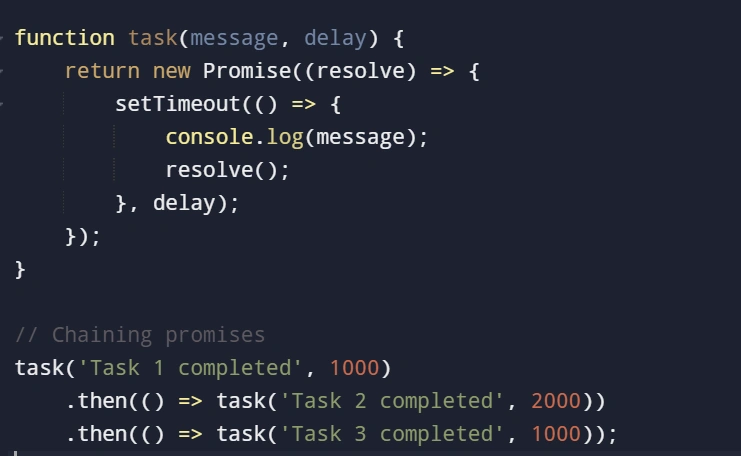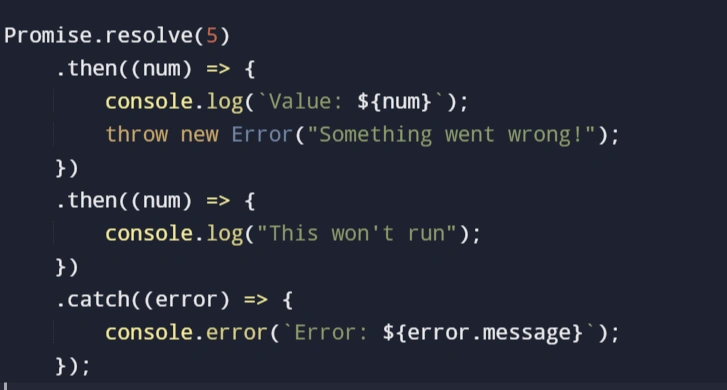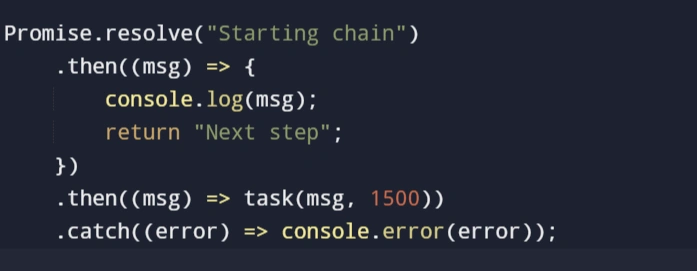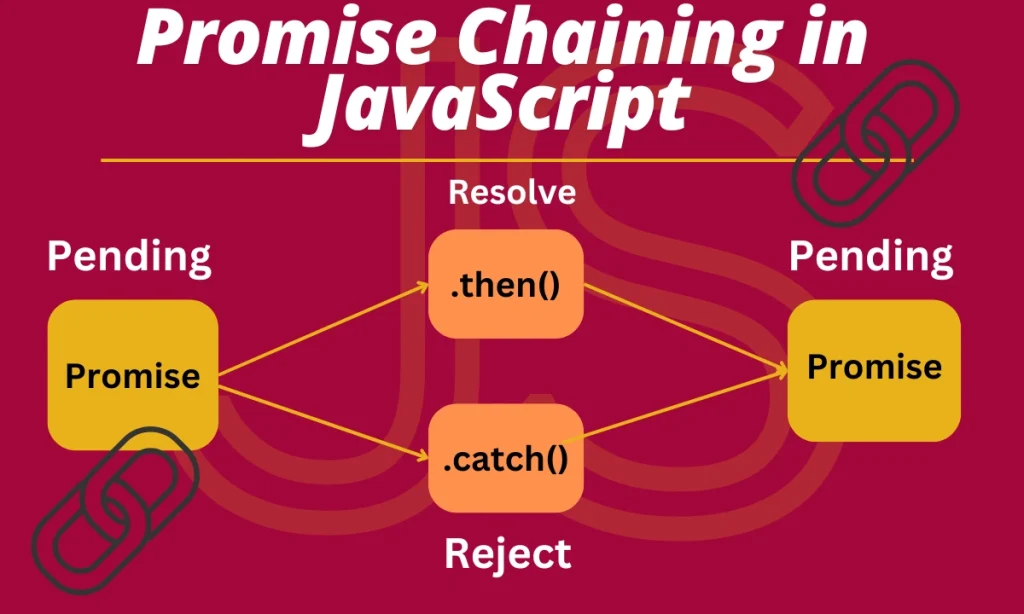What Is Promise Chaining in JavaScript- Promise chaining is a straightforward yet powerful concept in JavaScript. It allows developers to sequence asynchronous operations in a structured way, ensuring that each step depends on the result of the previous one. This is achieved using the .then(), .catch(), and .finally() methods. Imagine baking a cake: you can’t frost it until it’s baked or bake it until you’ve prepared the batter. Similarly, promise chaining ensures that each asynchronous task executes in the proper order.
How Promises Work in JavaScript
Before diving into chaining, let’s quickly recap what promises are:
- Definition: A promise represents the eventual result of an asynchronous operation.
- States:
- Pending: The initial state, neither fulfilled nor rejected.
- Fulfilled: The operation completed successfully.
- Rejected: The operation failed.
How Does Promise Chaining Work?
Promise chaining allows you to link multiple .then() handlers together, each processing the result of the previous one.
Code Example: Simple Promise Chaining in JavaScript
function task(message, delay) {
return new Promise((resolve) => {
setTimeout(() => {
console.log(message);
resolve();
}, delay);
});
}
// Chaining promises
task('Task 1 completed', 1000)
.then(() => task('Task 2 completed', 2000))
.then(() => task('Task 3 completed', 1000));
Explanation
- First Task: The first promise logs “Task 1 completed” after 1 second.
- Second Task: The
.then()method triggers the second promise, which waits 2 seconds before logging “Task 2 completed.” - Third Task: Another
.then()initiates the final promise, completing after 1 second.
Error Handling in Promise Chaining
Error handling is a crucial part of chaining. If any promise fails, the .catch() method ensures errors are gracefully managed.
Code Example: Handling Errors
Promise.resolve(5)
.then((num) => {
console.log(`Value: ${num}`);
throw new Error("Something went wrong!");
})
.then((num) => {
console.log("This won't run");
})
.catch((error) => {
console.error(`Error: ${error.message}`);
});
Explanation
- The first
.then()logs the value 5. - An error is thrown intentionally, skipping subsequent
.then()blocks. - The
.catch()block captures and logs the error.
Key Benefits of Promise Chaining in JavaScript
| Feature | Description |
|---|---|
| Sequential Execution | Ensures tasks run in order without callbacks. |
| Error Management | Handles errors at any point using .catch(). |
| Readability | Code is cleaner and easier to maintain. |
| Flexibility | Supports adding multiple asynchronous tasks dynamically. |
Advanced Techniques with Promise Chaining in JavaScript
Combining Synchronous and Asynchronous Tasks
You can mix synchronous operations with promises in a chain.
Promise.resolve("Starting chain")
.then((msg) => {
console.log(msg);
return "Next step";
})
.then((msg) => task(msg, 1500))
.catch((error) => console.error(error));
Best Practices for Promise Chaining
- Avoid Nested Promises: Keep
.then()flat for better readability. - Use Arrow Functions: Simplify callback syntax.
- Always Handle Errors: Include a
.catch()to manage unexpected issues.
FAQs
promise chaining in JavaScript explain fully in the article with easy examples.
Errors are handled using the .catch() method. It captures errors from any promise in the chain and allows you to respond appropriately.
Nesting makes the code harder to read and maintain. Promise chaining ensures a cleaner and more readable structure.
Yes, async/await provides a more concise syntax for managing promises and is often preferred for its simplicity.
If a promise is rejected, subsequent .then() blocks are skipped, and the .catch() block is executed.








